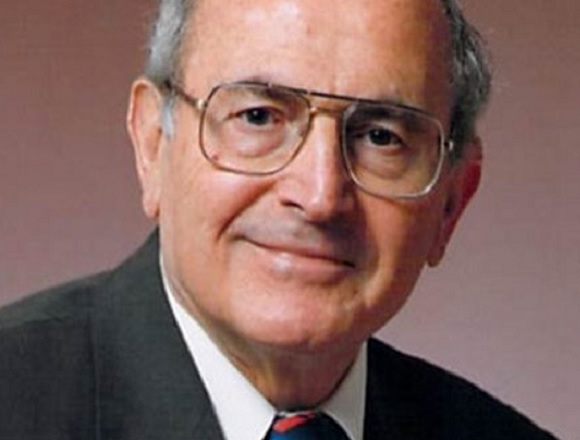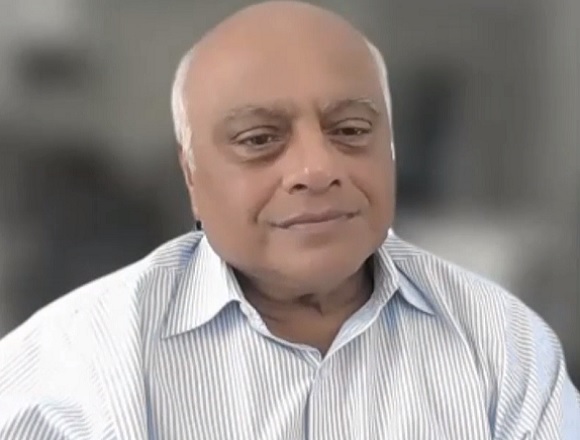Aliya Khan, MD, is a clinical professor of medicine in the Divisions of Endocrinology and Metabolism and Geriatrics at McMaster University, director of the Calcium Disorders Clinic at McMaster University Medical Centre, and director of the Fellowship Program in Metabolic Bone Disease at McMaster University. In this episode of McMaster Perspective Dr Khan joins Roman Jaeschke, MD, MSc, to talk about the pharmacologic and surgical treatment of hyperparathyroidism.
References
2. Bilezikian JP, Khan AA, Silverberg Sj, et al. Evaluation and Management of Primary Hyperparathyroidism: Summary Statement and Guidelines from the Fifth International Workshop. J Bone Miner Res. 2022 Nov;37(11):2293-2314. doi: 10.1002/jbmr.4677. Epub 2022 Oct 17. PMID: 36245251.
3. Bilezikian JP, Khan AA, Clarke BL, Mannstadt M, Potts JT, Brandi ML. The Fifth International Workshop on the Evaluation and Management of Primary Hyperparathyroidism. J Bone Miner Res. 2022 Nov;37(11):2290-2292. doi: 10.1002/jbmr.4670. Epub 2022 Oct 17. PMID: 36245277.
Roman Jaeschke, MD, MSc: Good afternoon, welcome to another edition of McMaster Perspective. I am again introducing Professor Aliya Khan, who talked to us previously about hypoparathyroidism, but the task force that she sat in, consisting of researchers from around the world, was also dealing with hyperparathyroidism.
I wonder if we could talk a little bit about that. Maybe my first question is, was there a need for such an update?
Aliya Khan, MD: Thank you so much, Professor Jaeschke. Yes, there was a need for an update on primary hyperparathyroidism. We have new molecules for the treatment of hyperparathyroidism for patients who are not suitable candidates for surgery or for patients who cannot go for surgery because of comorbidity or because of recurrent disease; and they might have multiple endocrine neoplasia.
We want to limit how much to repeat the surgery that we are exposing them to. We do have a number of molecules that are available for patients who are not surgical candidates and we felt that we wanted to position all the new information that we have and make it useful, and present this in an evidence-based manner.
Roman Jaeschke: This interview, this Perspective, will be accompanied by a list of and access to the papers. I believe it’s free access actually. Whoever would like to look into it in more detail will be able to. Again, you probably have more papers about parathyroid diseases in your CV than anybody else. But let’s go. You mentioned surgical treatment.
Aliya Khan: Yes.
Roman Jaeschke: When I was reading... as an internist, I’m usually—maybe the wrong word, but—afraid or scared when I see calcium ~3 mmol/L. And it sounded that it was taken as “Let’s follow it up and see what will happen.” What are the thresholds for treatment in general, either medical or surgical?
Aliya Khan: That’s a really good point. What we want to do, number one, is confirm the diagnosis. To confirm that our patient has primary hyperparathyroidism, we have to confirm that they have hypercalcemia—that’s a calcium corrected for albumin that is greater than the normal reference range on at least two occasions—in the presence of a parathyroid hormone (PTH) that is in the upper level of normal or clearly elevated, and the calcium-to-creatinine clearance ratio should be >0.02 ideally, but if it’s between 0.01 and 0.02, that’s in the gray zone, so we’re going to work with that and make sure that there aren’t any reasons for a low calcium-to-creatinine clearance ratio.
The other important point is to make sure the patient is not on hydrochlorothiazide. As you’ve mentioned, Professor Jaeschke, oftentimes hydrochlorothiazide is seen in patients on antihypertensives and it could be a combo pill. They might say, “No, I don’t take hydrochlorothiazide.” Then you say, “Show me your pills,” because there it is sitting there with the angiotensin-converting enzyme (ACE) inhibitor.
Roman Jaeschke: Is it only hydrochlorothiazide or will chlorthalidone do it as well?
Aliya Khan: Well, chlorthalidone... we can also see it with chlorthalidone and we can also see it with indapamide as well. It is important that we stop the thiazide diuretics and then repeat it, because the thiazide diuretics enhance calcium reabsorption through the kidney and that can confuse the picture. It’s absolutely critical that our patient not be on a thiazide diuretic and also not be on lithium, because lithium can increase the setpoint for calcium. That can give a picture, it can unmask primary hyperparathyroidism.
If a patient is on lithium, we have to work with it because it’s not an easy drug to stop just like that. Confirm the diagnosis, first of all, and then look to see how significant the hypercalcemia is. If the hypercalcemia is >0.25 mmol/L above the upper level of normal—and this means that there are ~2.85 mmol/L—then you could say, “You know what, you should be considered for surgery because you do have moderate hypercalcemia and you have a clear-cut elevation in PTH, and a calcium-to-creatinine clearance ratio that is consistent with this diagnosis.”
If the serum calcium corrected for albumin is >3 mmol/L, then we would call this severe hypercalcemia. If this happened in a pregnant woman, then we would say we have to do surgery if they’re in the second trimester, and if they are in the third trimester, we might try to manage with rehydration, but we might end up taking them for surgery as well. We do need to be careful about that.
What if they can’t go for surgery and they have significant hypercalcemia? Then we could give them a chemical parathyroidectomy by giving them a drug called cinacalcet. What cinacalcet does… it’s a calcimimetic agent because there are calcium-sensing receptors on the chief cells of the parathyroid glands and when calcium goes up, it binds to the calcium-sensing receptor and it turns off PTH. It’s just like the thermostat in our house. When the temperature goes up, the furnace goes off. When the calcium levels rise, PTH should go off. When calcium levels go up, it binds to the calcium-sensing receptor and PTH goes off.
What happens if you have hyperparathyroidism is you have adenomas and they don’t have enough calcium-sensing receptors. So, calcium is going up, but there aren’t enough receptors to turn off PTH. That’s why PTH is still being pumped up and PTH is taking the calcium out of the bones, it’s reabsorbing a lot of calcium through the kidney, and our patient has a high blood calcium that has to be peed out through the kidney. It causes kidney stones and it damages the kidneys as well.
The hypercalcemia will affect the ability of the kidney to concentrate the urine. Our patients get polyureic and polydipsic, they’re thirsty, and if we don’t correct and intervene and rehydrate them, they will dehydrate and go into vascular collapse. Volume contraction and dehydration is the way hypercalcemic patients die.
Roman Jaeschke: In terms of molecules… I’m just reflecting on the few patients who happened in my life who presented and didn’t necessarily do well with extreme hypercalcemia and vascular collapse, effectively as you were talking about.
In terms of treatment, from what I heard, a surgery is obviously there; if the patient is in agreement, it could be done. And in earlier stages, it’s a matter of hydration and of this molecule that sensitizes the receptors in the parathyroid. Is there anything else? Are there bisphosphonates, steroids, any other medications that could work?
Aliya Khan: You’re absolutely right. The bisphosphonates actually can protect the release of calcium from the skeleton. We did the landmark study with alendronate, looking at alendronate in patients who have primary hyperparathyroidism, and we showed that alendronate can actually preserve the skeleton, but it will not reestablish normal calcium levels because calcium is being reabsorbed through the kidney.
What cinacalcet does… Cinacalcet is the calcimimetic agent that can increase the sensitivity of the calcium-sensing receptor, so that the calcium that’s there will bind to the receptors and turn off PTH. We did the phase 3 trial with cinacalcet and we showed that cinacalcet can drop PTH levels and it can drop calcium into the normal reference range. It’s like a chemical parathyroidectomy.
These drugs can be used together, so you could start your patient on cinacalcet and a bisphosphonate or you could start your patient on cinacalcet and denosumab. Denosumab can also prevent the skeleton from being demineralized.
Roman Jaeschke: Okay, well, that is all very useful and I think it could be of interest to all of us who on occasions run into parathyroid conditions. The more we know about them, the more commonly we probably recognize them as well.
I want to thank you very much for your input and I would be happy to say that within the next few months we’ll probably update the chapters [in the McMaster Textbook of Internal Medicine] that you authored and coauthored with your fellows. Thank you very much again for talking to us and goodbye.
Aliya Khan: Thank you so much. It was my pleasure. Bye.
 English
English
 Español
Español
 українська
українська







